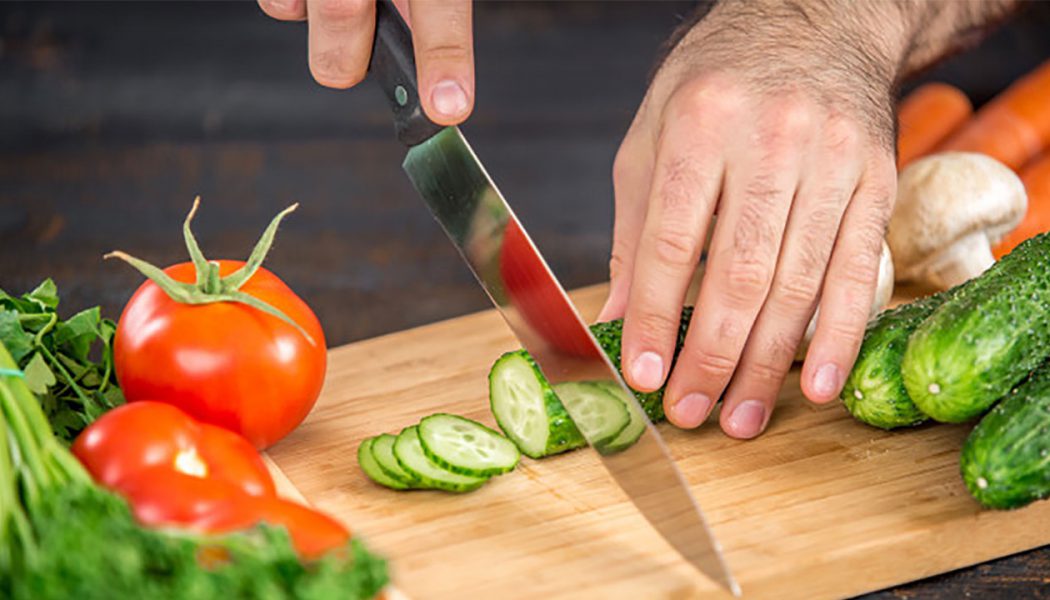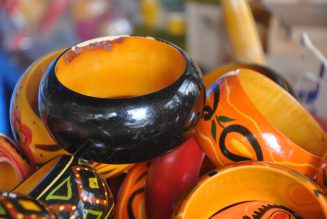Whatever you may be cooking in your kitchen, you are most likely needing a Cutting Board and you must know about it before you start using it. The quality of the Cutting Board is essential. You can also use it as a Serving Platter, Knead Dough and similar. The Cutting Boards also need to reliable and durable.
There are different types of Cutting Boards available in the market to choose from. Wood to Plastic to Bamboo, Glass, Marble and even Compressed Wood are available. The wooden Cutting Board is most popular and common. According to experts, wooden Cutting Boards are the best choice. Maple wood is most popular for Cutting Boards but there are many woods that are not suitable for Cutting Boards. The wood density is the main factor which decides the selection. Cherry and Walnut wood are also good but slightly expensive.
How to select a Cutting Board
Whatever be the wood, select a Cutting Board which is made out of one kind of wood. Checkerboard-pattern Cutting Boards are commonly available which use different kinds of wood. Different woods, having different densities when mixed together, will wear off differently when used with your knives. Also, the swelling and contraction of different kinds of woods are different and hence it impacts the structure of the board and also can create gab between them. Hence select a Cutting Board which is made of one kind of wood.
Cutting Boards made of Plastic is also popular, but it can be dangerous for your health. When you use a plastic board, micro-particles of plastic can get mixed with your food. Also, the stains on a plastic board are not easy to be cleaned and in fact they are some types of Bacteria. Wooden boards are also prone to bacterial infection but lesser than plastic.
Glass and Marble Cutting Boards can be appealing but can be hard for your knives. They are also often slick and slippery. Hence selecting a cutting board made of Glass and Marble is not recommended.
As you use the Cutting Boards, deep grooves and cuts are formed on the surface. These affect the durability as well as the way your knives cut and your safety while cutting. Also, bacteria tend to form inside the grooves and cuts and make it difficult to clean as well as pose health hazards. Small-sized Cutting Boards may be handy but smaller surface-area means that the food will constantly slide-off your board. Hence it is advisable to use a larger one.
Care and Cleaning
Most of the Cutting Boards will have some type of markings or designs to differentiate between the cutting side and the back side of the board. Though it is possible to cut on both sides, it is not advisable to do so. You might have cleaned the Cutting Board before cutting but the counter-top or the work surface where you are placing the Cutting Board may not be cleaned well. Hence chances are there that some Bacteria get adhered to the side in contact with the surface (back side). Always try to use one side (front) of the board only. Never use a board without prior cleaning.
You must clean the Cutting Board immediately after use and allow the water to dry fully before storing it elsewhere. When moisture is left behind or the surface is wet when you store it, it can attract dust as well as bacteria. Do not put the Cutting Board in the Dishwasher. The heat and rough water of the appliance can damage the wood. Just use Soap and Hot Water for cleaning the Cutting Board. If required, use a towel to dry the water left on the board. Also, cutting Onion, Coriander Leaves etc. on a board may retain the odour on the board and not everyone will like it. Be careful with Turmeric Powder as it can stain the board.
Multiple Cutting Boards?
Different Cutting/Chopping Board colours exist as per the Food Safety norms. Each board is used for different types of food or food groups. Using coloured boards help us in minimizing the risk of cross-contamination from different food items. Usually, Red colour boards are used for Raw Meat and Poultry, Yellow for Cooked Meat and Poultry, Blue for Raw Fish, White for Dairy and Bakery items. Green boards are used for washed Fruits and Salad Vegetables. A Brown coloured board is used for unwashed Vegetables and Purple for Free-From products such as Gluten-Free items.
When to replace your Cutting Board
While it is difficult to say how long a board will last, you must discard your Cutting Board if it has deep knife scratches on it and/or it does not sit flat on the work surface. Also, when you see black colour or stains on the board which remain there even after proper cleaning and drying, you must change the board. The stains normally are due to Bacterial infection.
Information provided here is only for public awareness



